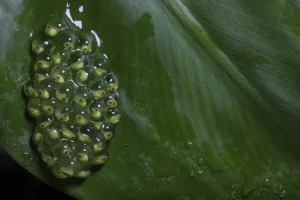At dawn, 64-year-old farmer Thomas walked his soybean fields, as he had for decades. But that morning, he spotted something strange: clusters of glowing, bluish orbs in the mud. Puzzled, he snapped photos and sent them to a biologist he once met. By the next day, she arrived with colleagues—and confirmed what Thomas had found: tree frog eggs. The species had never been seen in that part of the state before. Shifting temperatures and rainfall had quietly redrawn their habitat, making Thomas’s farm a new breeding ground.
Instead of dismissing the discovery, he protected it. Each morning, he checked on the eggs, even digging a small pond to keep them safe. Soon the area buzzed with dragonflies and birds, and tadpoles wriggled into life. For Thomas, who had spent his life raising crops and animals, the tiny frogs were a lesson in resilience. He marked off the pond, kept equipment away, and welcomed the scientists back to study the new arrivals.

“It seemed like the least I could do,” he said simply. Now, when Thomas walks his land, he doesn’t just see soybeans—he sees possibility. And when he hears the chirp of frogs at dusk, he knows he’s left a quiet legacy of stewardship.
